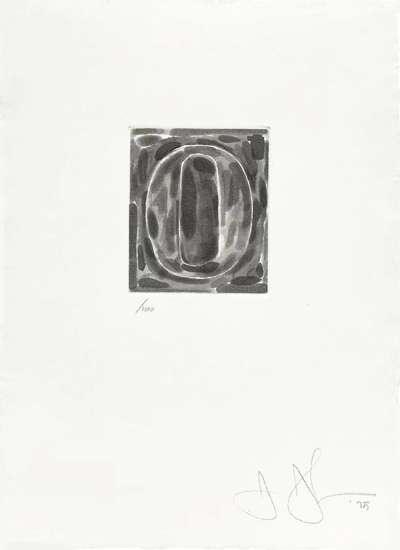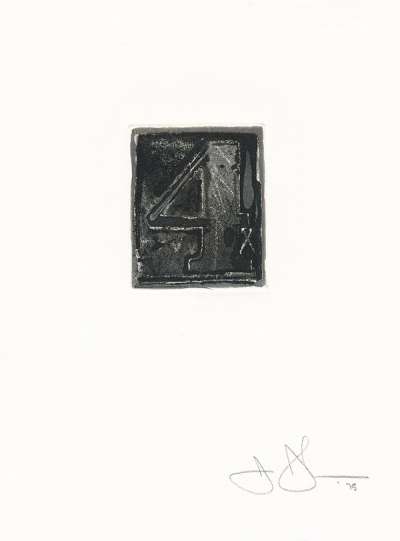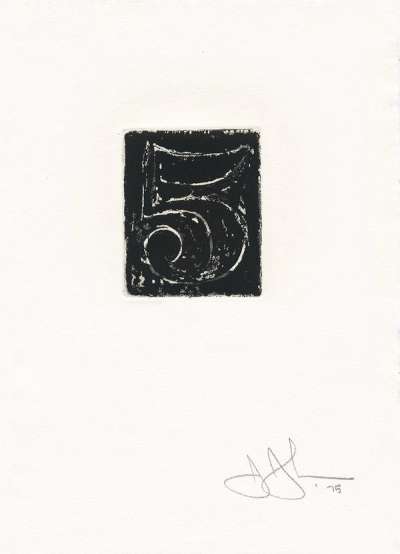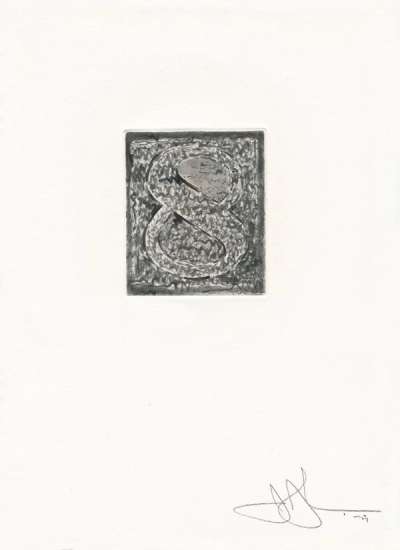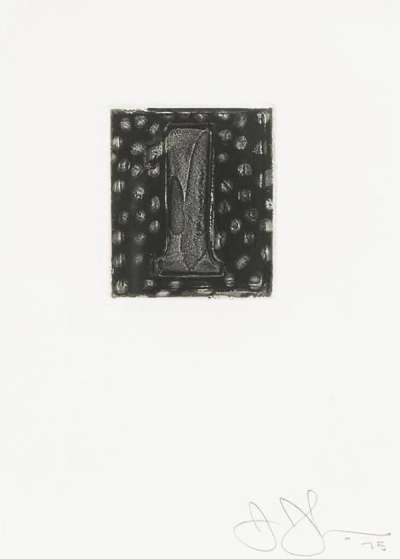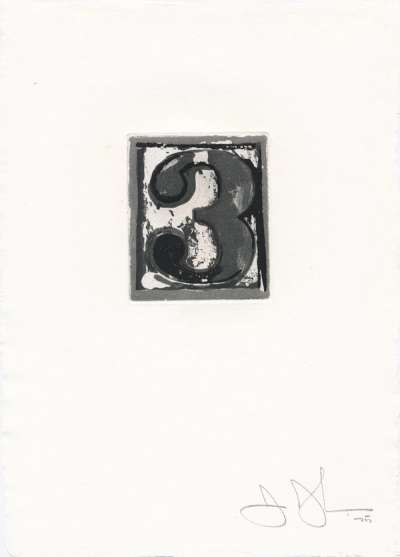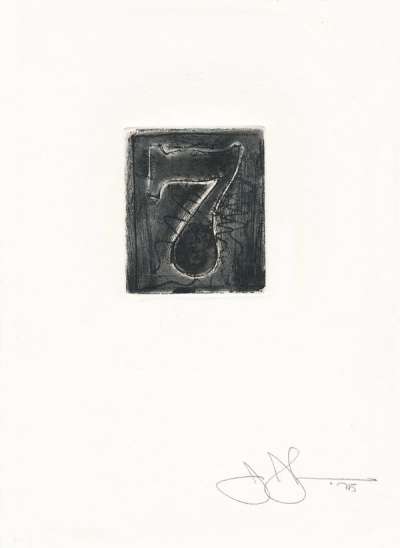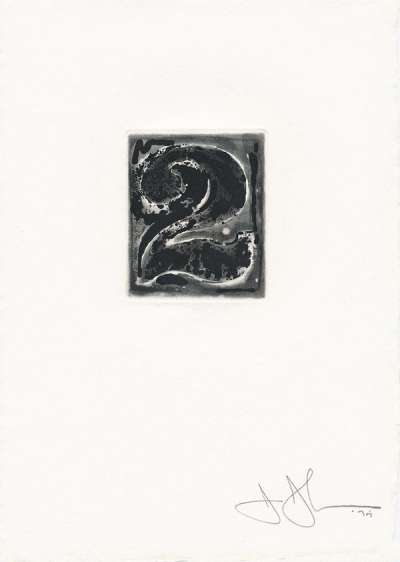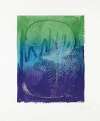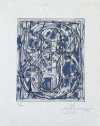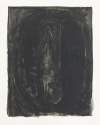0-9
Jasper Johns' 0-9 series presents a profound exploration of numerical symbols, transforming them from mere markers of quantity into subjects of artistic investigation. Created in 1963 with his characteristic blend of conceptual depth and visual innovation, this series dissects the essence of numbers through variations in style, texture, and context, inviting viewers to reconsider their perceptual and cultural significance.
Jasper Johns 0-9 For sale
0-9 Value (5 Years)
Jasper Johns's 0-9 series has historically shown more modest results compared with the artist’s wider oeuvre, with auction prices ranging from £1241 to £2676. Average annual growth has remained modest at -18.43%, with certain works seeing declines in value. Over 5 total auction appearances, average selling prices have held steady around £2075. This series appeals to collectors seeking accessible entry points into Jasper Johns’s print market.
0-9 Market value
Auction Results
| Artwork | Auction Date | Auction House | Return to Seller | Hammer Price | Buyer Paid |
|---|---|---|---|---|---|
 4 (ULAE 160) Jasper Johns Signed Print | 22 Feb 2025 | Plückbaum Aucktionen | £1,063 | £1,250 | £1,550 |
 5 (ULAE 161) Jasper Johns Signed Print | 22 Feb 2025 | Plückbaum Aucktionen | £1,318 | £1,550 | £1,950 |
 0 (ULAE 156) Jasper Johns Signed Print | 2 Mar 2023 | Mallet Japan | £1,998 | £2,350 | £2,700 |
 8 (ULAE 164) Jasper Johns Signed Print | 15 Jul 2022 | SBI Art Auction | £2,210 | £2,600 | £3,100 |
Sell Your Art
with Us
with Us
Join Our Network of Collectors. Buy, Sell and Track Demand
Meaning & Analysis
Jasper Johns, a pivotal figure in American art, has long been fascinated with the interrogation of common symbols and their representational capacities. The 0-9 series is a compelling testament to this ongoing inquiry, where Johns delves into the realm of numerals to explore their aesthetic and symbolic potentials. Each piece within the series, denoting the numerals from 0 through 9, is rendered with a distinctive approach that challenges conventional perceptions of these universal symbols.
Through the 0-9 series, Johns employs a variety of techniques and mediums to present each number, thereby exploring the multifaceted nature of visual representation. This methodological diversity not only highlights Johns’ mastery over his craft but also mirrors the complex ways in which numbers function within society, beyond their utilitarian role in quantification to signify deeper meanings, from personal identifiers to markers of historical significance.
Johns' work with numerals is deeply rooted in his broader artistic philosophy, which often centres around themes of perception, identity, and the fluid boundaries between object and symbol. By transforming numerals into the main subject of artistic expression, Johns elevates them from their everyday utility, prompting a re-evaluation of their role as carriers of meaning. This exploration is indicative of Johns’ ability to transcend the apparent simplicity of his subjects, revealing the layers of complexity that lie beneath.

